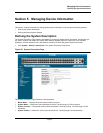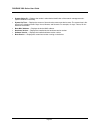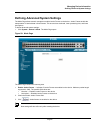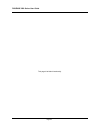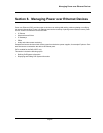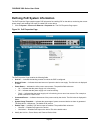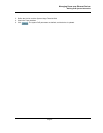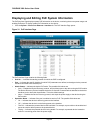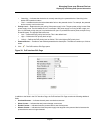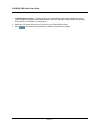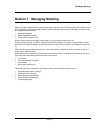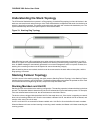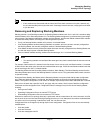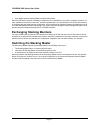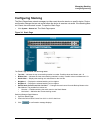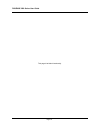
Managing Power over Ethernet Devices
Displaying and Editing PoE System Information
Page 69
– Searching — Indicates that the device is currently searching for a powered device. Searching is the
default PoE operational status.
– Fault — Indicates that the device has detected a fault on the powered device. For example, the powered
device memory could not be read.
• Priority Level — Determines the port priority if the power supply is low. The port power priority is used if the
power supply is low. The field default is low. For example, if the power supply is running at 99% usage, and
port 1 is prioritized as high, but port 3 is prioritized as low, port 1 is prioritized to receive power, and port 3 may
be denied power. The possible field values are:
– Low — Defines the PoE priority level as low. This is the default level.
– High — Defines the PoE priority level as high.
– Critical — Defines the PoE priority level as Critical. This is the highest PoE priority level.
• Powered Device — Provides a user-defined powered device description. The field can contain up to 24 char-
acters.
2. Click . The PoE Interface Edit Page opens:
Figure 32: PoE Interface Edit Page
In addition to the fields in the PoE Interface Page, the PoE Interface Edit Page contains the following additional
fields:
• Overload Counter — Indicates the total power overload occurrences.
• Short Counter — Indicates the total power shortage occurrences.
• Denied Counter — Indicates times the powered device was denied power.
• Absent Counter — Indicates the times the power supply was stopped to the powered device because the
powered device was no longer detected.



